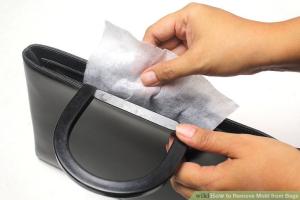Ultimate Guide: How to Effectively Remove Mold from Bags

-
Quick Links:
- Understanding Mold: What Is It?
- Why Mold Grows in Bags
- Signs of Mold Infestation
- Essential Supplies for Mold Removal
- Step-by-Step Guide to Remove Mold from Bags
- Preventing Mold Growth on Bags
- Real-World Case Studies
- Expert Insights on Mold Management
- FAQs
Understanding Mold: What Is It?
Mold is a type of fungus that thrives in damp, warm environments. It reproduces through spores that can be airborne or settle on surfaces. While some types of mold play a crucial role in nature by decomposing organic matter, others can pose health risks and cause significant damage to property.
Why Mold Grows in Bags
Bags, especially those made of fabric or other porous materials, can become a breeding ground for mold if they are stored improperly. Factors contributing to mold growth include:
- High humidity levels
- Inadequate ventilation
- Exposure to moisture from spills or wet items
- Long-term storage without cleaning
Signs of Mold Infestation
Identifying mold in your bags early can prevent further damage. Look for:
- Visible patches of mold, which can appear as black, green, or white spots
- A musty smell emanating from the bag
- Discoloration or stains on the fabric or material
- Texture changes, such as soft or damp spots
Essential Supplies for Mold Removal
Before you begin the cleaning process, gather the following supplies:
- White vinegar or hydrogen peroxide
- Baking soda
- Scrub brush or sponge
- Protective gloves and mask
- Spray bottle
- Soft cloths or rags
- Washable bags (if applicable)
Step-by-Step Guide to Remove Mold from Bags
Follow these steps to effectively remove mold from your bags:
Step 1: Safety First
Wear protective gloves and a mask to avoid inhaling mold spores. Ensure you are working in a well-ventilated area.
Step 2: Inspect and Remove Contents
Empty the bag and inspect its contents. If any items are moldy, discard them or wash them according to their care instructions.
Step 3: Pre-Treat the Mold Stains
Apply white vinegar or hydrogen peroxide directly to the moldy areas. Allow it to sit for at least 10 minutes to kill mold spores.
Step 4: Scrub the Affected Areas
Using a scrub brush or sponge, gently scrub the treated areas. For stubborn stains, sprinkle baking soda on the sponge for added abrasion.
Step 5: Rinse and Dry
Rinse the bag thoroughly with water, ensuring that all cleaning solutions are removed. Hang the bag in a well-ventilated area to dry completely.
Preventing Mold Growth on Bags
To keep your bags mold-free in the future, consider these preventive measures:
- Store bags in a cool, dry place
- Avoid placing wet items inside
- Regularly clean and inspect bags
- Use silica gel packets to absorb moisture
Real-World Case Studies
Case Study 1: A family discovered mold in their travel bags after a rainy trip. By following the aforementioned cleaning steps, they successfully removed the mold and implemented storage solutions that included moisture-absorbing products.
Case Study 2: An outdoor enthusiast found mold in his hiking backpack. He used a combination of vinegar and baking soda, which not only removed the mold but also refreshed the bag.
Expert Insights on Mold Management
According to mold remediation experts, regular maintenance and proper storage are key to preventing mold. They recommend periodic inspections and proactive cleaning to avoid infestations.
FAQs
1. Can I wash my bag in the washing machine to remove mold?
It depends on the material. Always check the care label and consider pre-treating the mold first.
2. Is vinegar effective against all types of mold?
Vinegar is effective against many types of mold but not all. For stubborn cases, consider using hydrogen peroxide.
3. How can I tell if mold is completely gone from my bag?
Ensure there are no visible stains or odors. If in doubt, repeat the cleaning process.
4. What should I do if my bag is extensively damaged by mold?
If the mold has deeply penetrated the material, it may be best to discard the bag to prevent health risks.
5. Can I use bleach to remove mold?
Bleach is not recommended for porous materials as it can damage them and may not effectively kill all mold spores.
6. How often should I clean my bags to prevent mold?
Regular cleaning every few months is advisable, especially if you live in a humid environment.
7. Are there specific bags less prone to mold?
Yes, bags made of synthetic materials tend to be less prone to mold compared to natural fabrics.
8. What is the best way to store bags long-term?
Store bags in a cool, dry place and avoid stacking them directly on top of one another.
9. Can I prevent mold without using chemicals?
Yes, regular cleaning and proper storage can significantly reduce the risk of mold without chemicals.
10. What are the health risks associated with mold in bags?
Mold can cause allergic reactions, respiratory issues, and other health problems, particularly in sensitive individuals.